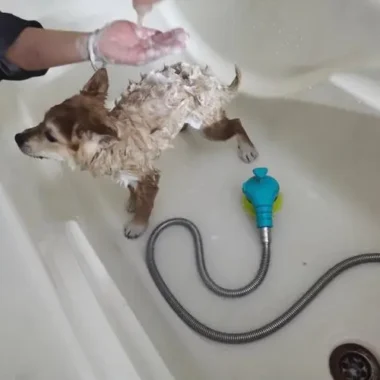Cat ear mites are a common condition, particularly prevalent in spring and summer when the weather is warm, and they are highly contagious. Although not a serious illness, they can persist and require dedicated effort and time for complete treatment. If left untreated, secondary bacterial infections can occur, leading to ear inflammation and in severe cases, even encephalitis or deafness in cats. Prompt treatment is essential upon detecting ear mites to safeguard your cat’s health.

I. How to Determine if Your Cat Has Ear Mites:
- Inside the cat’s ears, there are dark brown waxy deposits resembling coffee grounds.
- The cat exhibits excessive scratching of the ears with hind paws, potentially causing wounds.
- The cat often shakes its head to dislodge debris from the ears.
- Near the cat’s ear canal, there may be a foul odor.
If your cat shows any of these symptoms, pet owners should remain vigilant to ascertain if their cat is suffering from ear mites or a similar bacterial infection. If uncertain, it is advisable to conduct tests at a veterinary hospital to accurately diagnose the condition. Correct identification of the cause enables targeted treatment, facilitating the cat’s recovery.
II. Steps After Confirming Ear Mites:
- Isolate any cats or dogs in the household if one is diagnosed with ear mites to prevent cross-contamination.
- Wash all items used by the affected cat thoroughly and sun-dry them. For items that cannot be washed, consider using a UV lamp for sterilization.
- Prepare ear cleaning solution, EarSolv, and cotton swabs.a) Apply a suitable ear cleaning solution into the cat’s ear canal, then massage for about half a minute to dislodge ear debris. Release after massaging; the cat will immediately shake its head. Use tissues to wipe away expelled liquid and black debris before proceeding.b) Insert a cotton swab deep into the outer ear canal to wipe away excess fluid, preparing for medication.c) Attach an extended tube to EarSolv, lift the cat’s ear flap, and administer the medication into the ear canal. Approximately the size of a yellow soybean is sufficient. After administering, gently massage the ear base. Treatment is complete after applying the medication.Note: Some pet owners may discontinue medication upon observing reduced ear secretions, which can lead to recurring ear mites. Ideally, continue treatment for a few more days post-recovery to prevent any remaining mite eggs.

III. Preventing Ear Mites in Healthy Cats:
Even after a thorough cure, can cats get ear mites? Yes! Ear mites are parasitic infections, and the risk of reinfection persists as long as parasites exist. Hence, pet owners must ensure their cats receive timely deworming.








